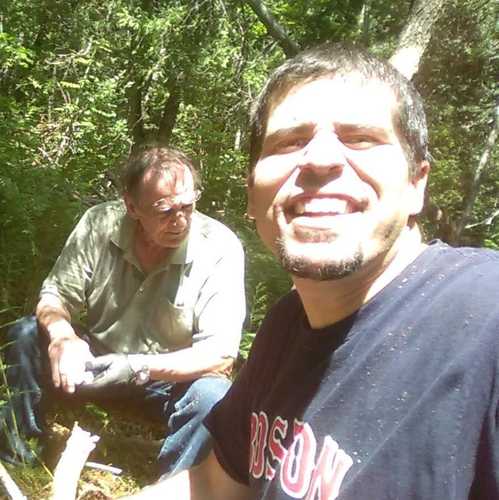Keywords: Ash
Item 72949
Edna St. Vincent Millay, Ash Point, 1912
Contributed by: Camden Public Library Date: 1912-08-17 Location: Rockland Media: Photographic print
Item 67660
Black ash landfill, Yarmouth, ca. 1900
Contributed by: Yarmouth Historical Society Date: circa 1900 Location: Yarmouth Media: Photographic print
Item 32813
133 Ash Avenue, Portland, 1924
Owner in 1924: Chester A. Dikeman Style: National Folk Use: Dwelling - Single family
Item 32040
Assessor's Record, 133 Ash Avenue, Portland, 1924
Owner in 1924: Clarance Dykeman Use: Shed
Item 150718
Dwelling House for Howard W. Maxwell, Lewiston, ca. 1877
Contributed by: Maine Historical Society Date: circa 1877 Location: Lewiston Client: Howard W. Maxwell Architect: Stevens and Coombs Architects
Item 150593
Plans of Alterations & Residence of F. Gutmann Esq, Lewiston, 1880-1910
Contributed by: Maine Historical Society Date: 1880–1910 Location: Lewiston; Lewiston Client: Frank Gutmann Architect: George M. Coombs; Stevens and Coombs Architects
Exhibit
Yarmouth's "Third Falls" provided the perfect location for papermaking -- and, soon, for producing soda pulp for making paper. At the end of the 19th century and beginning of the 20th, Yarmouth was an international leader in soda pulp production.
Exhibit
Holding up the Sky: Wabanaki people, culture, history, and art
Learn about Native diplomacy and obligation by exploring 13,000 years of Wabanaki residence in Maine through 17th century treaties, historic items, and contemporary artworks—from ash baskets to high fashion. Wabanaki voices contextualize present-day relevance and repercussions of 400 years of shared histories between Wabanakis and settlers to their region.
Site Page
Historic Hallowell - Wood Ashes or Gold Dust?
"Both pot-ash and pearl-ash were worth more than any other product a farmer could produce, and large quantities were shipped from Hallowell until the…"
Site Page
Mount Desert Island: Shaped by Nature - Sources For A Short History Of Performing Arts On MDI
"Bar Harbor's Gilded Century: Opulence to Ashes, 1850-1950. Camden, Me.: Down East, 2009. Print. Research and exhibit by Taylor Thomas-Marsh, Gina…"
Story
Wikpiyik: The Basket Tree
by Darren Ranco
Countering the Emerald Ash Borer with Wabanaki Ecological Knowledge
Story
Why environmental advocacy is critical for making baskets
by Jennifer Sapiel Neptune
My advocacy work for the Maine Indian Basketmakers Alliance
Lesson Plan
Grade Level: 3-5, 6-8, 9-12
Content Area: Science & Engineering, Social Studies
This lesson plan will give middle and high school students a broad overview of the ash tree population in North America, the Emerald Ash Borer (EAB) threatening it, and the importance of the ash tree to the Wabanaki people in Maine. Students will look at Wabanaki oral histories as well as the geological/glacial beginnings of the region we now know as Maine for a general understanding of how the ash tree came to be a significant part of Wabanaki cultural history and environmental history in Maine. Students will compare national measures to combat the EAB to the Wabanaki-led Ash Task Force’s approaches in Maine, will discuss the benefits and challenges of biological control of invasive species, the concept of climigration, the concepts of Traditional Ecological Knowledge (TEK) and Indigenous Knowledge (IK) and how research scientists arrive at best practices for aiding the environment.
Lesson Plan
Wabanaki Studies: Stewarding Natural Resources
Grade Level: 3-5
Content Area: Science & Engineering, Social Studies
This lesson plan will introduce elementary-grade students to the concepts and importance of Traditional Ecological Knowledge (TEK) and Indigenous Knowledge (IK), taught and understood through oral history to generations of Wabanaki people. Students will engage in discussions about how humans can be stewards of the local ecosystem, and how non-Native Maine citizens can listen to, learn from, and amplify the voices of Wabanaki neighbors to assist in the future of a sustainable environment. Students will learn about Wabanaki artists, teachers, and leaders from the past and present to help contextualize the concepts and ideas in this lesson, and learn about how Wabanaki youth are carrying tradition forward into the future.





















